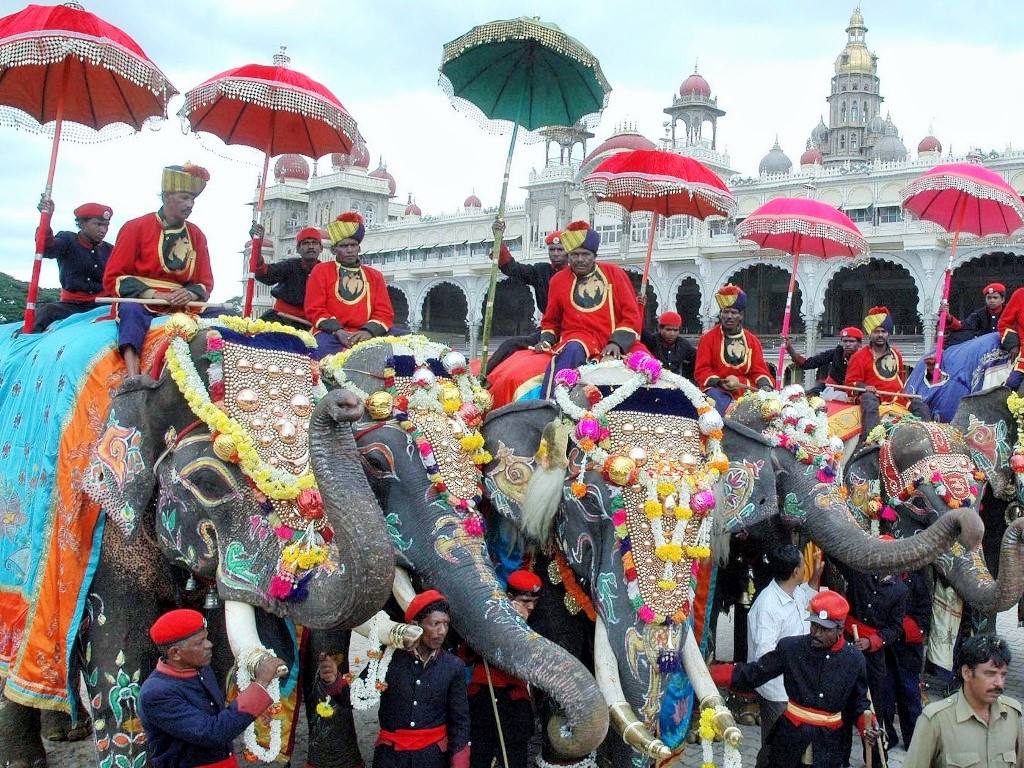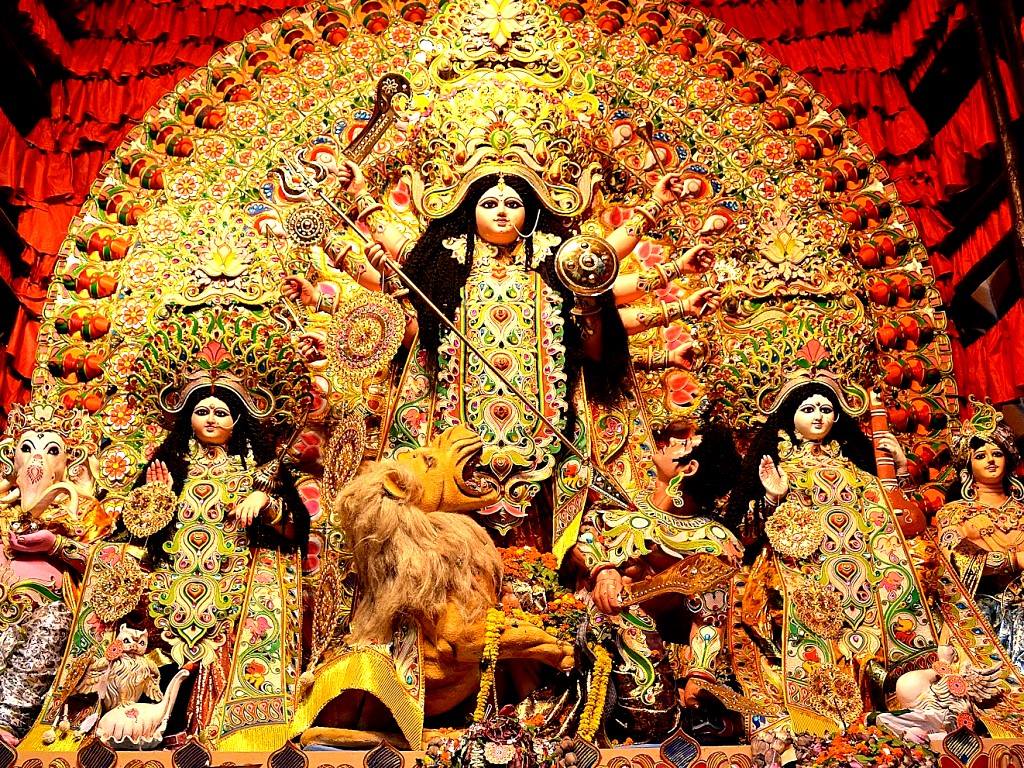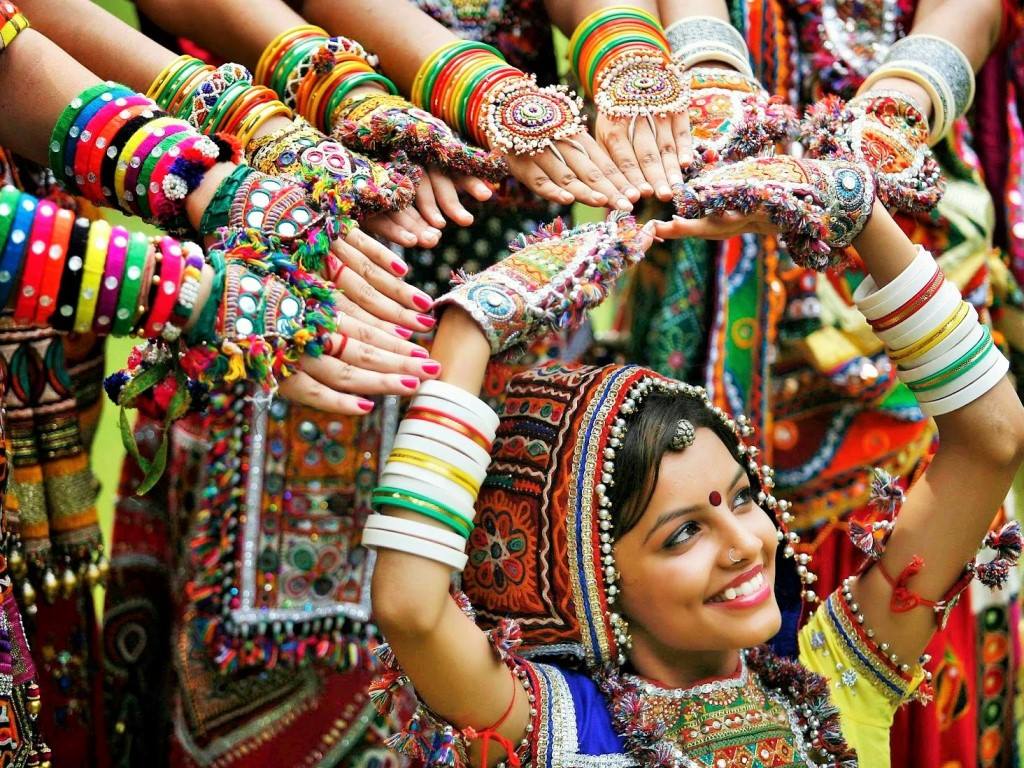Page Contents
Mysore Dussehra
 Mysore Palace during Dussehra
Mysore Palace during Dussehra
The tradition of Mysore Dussehra was first started by the Wodeyar King, Raja Wodeyar I in the year of 1610. On this day, the Mysore Palace is lit up for all the 10 days of Dussehra. Krishnaraja Wodeyar III started the tradition of the special durbar in the Mysore Palace during Dussehra in 1805 attended by members of the royal family, special invitees, officials and the common people. Mysore Dussehra official site
On Vijayadashami, a special show is held in the streets of Mysore called s Jamboo Savari. Jamboo means ‘elephant’ and Savari means ride. During this procession, the idol of the Goddess Chamundeshwari placed inside a golden howdah on the top of a decorated elephant is shown to the public..
This idol is worshiped by the royal family before being taken around in the public. Apart from these, colors, dance, traditional drum music, decorated royal animals like elephants, horses and camels do a march past through the streets of the city. It starts from the Mysore Palace and ends near a place called Bannimantap, where the Banni tree is worshiped.
According to the legends of the Mahabharata, huge trunks of the Banni tree was used by the Pandavas to hide their arms during their one-year period of Agyatvasa (Living unknown life). Thus, before commencing any war, the royal kings used to worship the tree to help them emerge victorious in the war. The Dussehra festical ends on the last night of Vijayadashami with an event held in the grounds at Bannimantap called as Panjina Kavayithu (torch-light parade).
 Jamboo Savaari (Elephant ride) during Dussehra in Mysore
Jamboo Savaari (Elephant ride) during Dussehra in Mysore
Another major attraction of Dussehra in Mysore is the Dussehra exhibition held in the exhibition grounds opposite to the Mysore Palace. This exhibition starts from the first day of Dussehra and continues until end of the year, December. Many stalls and food shops are opened. They sell various items like clothings, toys, household things, cosmetics etc. This Dussehra even attracts a large number of foreign tourists.
Besides, in the fair, various playing items are there like ferris-wheel and many games especially for the kids.
Durga Puja of Kolkata and Pandal decorations:
 Statue of the Goddess Durga in Kolkata
Statue of the Goddess Durga in Kolkata
In Kolkata alone, Mre than 2000 pandals are set up across the city with different themes. Visitors from across the country pours in to see the maginificence of the pandals. Whole of the city is decorated with sparkling lights. Each night is like a carnival in the city drawing hundreds of thousands of visitors in the city each night. The number of visitors almost increases exponentially from seventh day of Dussehra until the last day.
 Inside a decorated pandal in Dussehra
Inside a decorated pandal in Dussehra
Seventh day of Dussehra is special because on this day, eyes of the Goddess is unveiled for the public. For rest of the day, eyes are covered with clothes. Visiting different kinds of pandals with different themes is fun for visitors. However, due to the uncontrolled crowed pouring in each new day, the traffic comes to a standstill. It becomes very hard to cover even 4-5 kms of distance in an hour. This is becoming a trend now a days in neighbouring states of Bengal like Orissa and Bihar to decorate and celebrate Dussehra with Pandals. To celebrate the essence of the Goddess, girls dress up saarees and dance with burning lamps in their hands.
DurgaPuja at Bastar, Chhatishgarh
 Dussehra Bastar (celebrated by tribal people), Chhatisgarh
Dussehra Bastar (celebrated by tribal people), Chhatisgarh
Dussehra is one fo the most important festivals of Bastar, Chhatishgarh. It is celebrated in somewhat different style from the rest of the country. This Dussehra is tribal in nature, yet with the same magnificence that is seen all over India. Deities from the surrounding tribal villages unite together at the Danteshwari devi temple in Jagdalpur, the district head quarter of Bastar. Here the whole festival is dedicated to the Goddess herself.
Navratra celebration & Garba, Ahmedabad
 Dandia ras during Navratra in Ahemdabad
Dandia ras during Navratra in Ahemdabad
Navaratra in Gujarat is devoted to the Goddess Amba mataji. In most of the homes, statues and images of the Goddess is worshiped with cultural rituals and ancient practices. The common most form of the public celebration is the garba and dandia-ras, a traditional form of dancing played with bamboo sticks in hand. This dance is played throughout the nine days of the festival in open grounds or in the communities. The crowd size might vary from tens to thousands of people. This dance is to celebrate the power of Shakti, the Goddess of power.
Kota Dussehra, Rajasthan
 Lanka Dehan during Dussehra in Kota, Rajasthan
Lanka Dehan during Dussehra in Kota, Rajasthan
Kota is mostly famous for the Raavan-Dehan tradition in Dussehra ground. On this special ocassion, people burn the large effigies of Ravana and his two brothers Kumbhakarna and Meghnada to celebrate the vistory of good over evil.
Like Mysore Dussehra, there is always a festive mood in the Dussehra ground with small stalls and shops selling a wide variety of items. This fair also lasts for ten days.
Kullu Dussehra
 Kullu Dussehra, Himachal Pradesh
Kullu Dussehra, Himachal Pradesh
Kullu Dussehra is celebrated mostly in the month of October in Himachal Pradesh state of India. It is celebrated in the Dhalpur maidan of the Kullu valley. It lasts for seven days. This festival also celebrates the vistory of good over evil. Almost around 500 local deities arrive in Kullu to pay respect to the lord Raghunath ji in Kullu. Along with dieties comes the Goddess Hadima from Manali. This Goddess is brought in Palki by their dieities. Dieties play traditional drums and sing songs while taking Goddess Hadimba to raghunath ji temple in Kullu.
Ramleela, Varanasi

Ramleela means playing the major events of the Ramayana in form of a stage drama. Ramleela is held at Ram Nagar, named after the lord Rama, situated alomst 15 kms from the holy city of Varanasi. This drams lasts for 31 days in the theatres. Sadhus called Ramayanis recite the 50000 words in form of verses of Ramayana.
